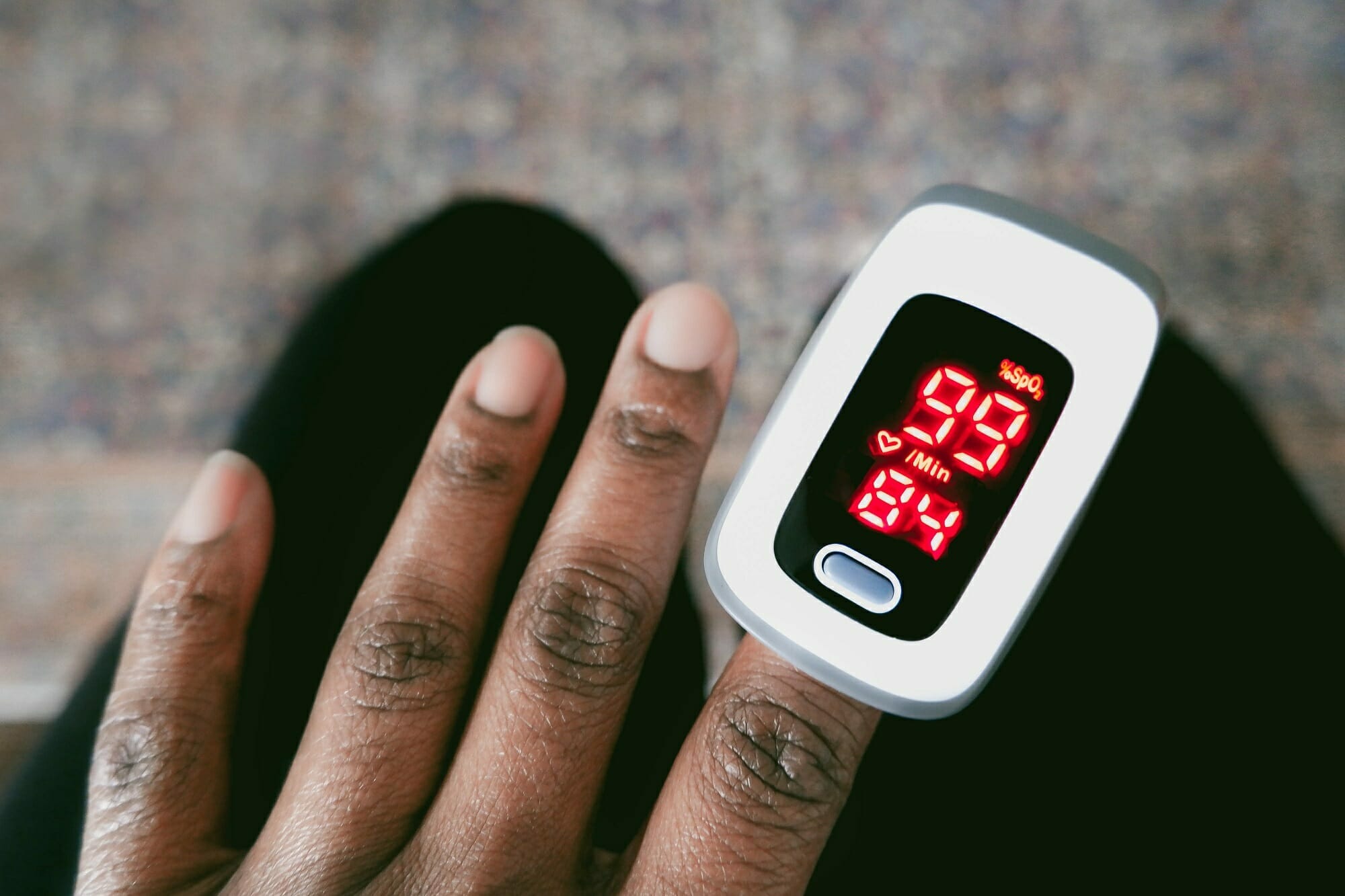In patients requiring supplemental oxygen therapy, the levels administered often depend on an individual’s oxygen saturation as measured by pulse oximetry. However, since this technology was developed in nondiverse populations, racial bias may influence the accuracy of pulse oximeter readings. Accordingly, the use of these devices in determining triage needs and adjustment of oxygen levels could increase the risk of hypoxemia in Black patients compared with non-Black patients.1
In a study recently published in the New England Journal of Medicine, Michael W. Sjoding, MD, assistant professor in the Division of Pulmonary and Critical Care Medicine at the University of Michigan Medical School in Ann Arbor, and colleagues explored this possibility among patients receiving supplemental oxygen across numerous sites.1
Sjoding et al analyzed 10,789 pairs of measures of oxygen saturation by pulse oximetry and arterial oxygen saturation in arterial blood gas from 1333 White patients and 276 Black patients at the University of Michigan Hospital. In addition, they analyzed 37,308 pairs from 7342 White patients and 1050 Black patients in intensive care units (ICUs) in 178 other hospitals.
They detected occult hypoxemia — defined as arterial oxygen saturation of less than 88% despite oxygen saturation of 92% to 96% on pulse oximetry — in 11.7% of Black patients (95% CI, 8.5%-16.0%) compared with 3.6% of White patients (95% CI, 2.7%-4.7%) in an unadjusted analysis of the University of Michigan cohort. Comparable results were found in additional analyses adjusting for age, sex, and cardiovascular risk, and after excluding patients with diabetes or elevated carboxyhemoglobin levels.
In the multicenter cohort, unadjusted analyses demonstrated occult hypoxemia in 17.0% of Black patients (95% CI, 12.2%-23.3%) and 6.2% of White patients (95% CI, 5.4%-7.1%).1
“Thus, in two large cohorts, Black patients had nearly three times the frequency of occult hypoxemia that was not detected by pulse oximetry as White patients,” wrote Dr Sjoding et al.1 “Given the widespread use of pulse oximetry for medical decision making, these findings have some major implications, especially during the current coronavirus disease 2019 (COVID-19) pandemic.”
Because pulse oximetry determines oxygen levels based on how much light is transmitted through the skin, the darker skin tones among Black patients are likely the reason for the discrepancy noted in the study, Dr Sjoding told us in a recent interview. “Melanin likely changes the relationship between the amount of light transmitted and the oxygen level.”
The observed racial variation in risk highlights the need to consider other clinical and patient-reported data indicative of oxygen levels along with pulse oximetry readings, Dr Sjoding and his coauthors stated. More broadly, these results underscore the need to elucidate and address racial bias associated with medical devices.
While pulse oximeters can provide valuable information, health care professionals should remain aware of the imperfect accuracy of these devices and avoid overreliance on them in clinical decision making. “Until the devices are corrected, health care providers need to be aware that a device reading 92% could mean the patient’s true oxygen level is anywhere between 88% and 96% and may be more extreme in some cases, particularly for patients with darker skin,” Dr Sjoding advised.
A relatively simple engineering solution could potentially increase the accuracy of pulse oximeter readings in all patients, but this would require a redesign of these devices. “I think healthcare providers need to take a stand and push for this to make sure it happens,” Dr Sjoding said.
In a letter published in March 2021 in the Lancet Respiratory Medicine, a group of critical care trainees from the United States and the United Kingdom (Hidalgo et al) advocated for prompt reform in this area, noting that the differential inaccuracy of pulse oximeters has been reported on since the 1990s.2 They cited this issue as an “example of systemic racism in health care delivery that has not been addressed despite decades of evidence.”
Although the US Food and Drug Administration (FDA) recently published information about the limitations of pulse oximeters along with relevant recommendations for clinicians and patients, Hidalgo et al deemed these efforts insufficient.2,3, They called on the FDA and other regulatory bodies to conduct a review of these devices and to reserve approval for those with equivalent performance regardless of race.
Additionally, the authors asked that pulmonary and critical care societies push for rigorous testing of pulse oximeters by the regulatory agencies, and also called on “hospitals to commit to only purchasing pulse oximeters that have been shown to work equally well in patients of colour.”2
While a redesign of pulse oximeters to correct the race-based inaccuracies is ultimately needed, a “bedside adjustment may be the least bad approach in the immediate short term until a concrete solution is found,” wrote Philip et al in a letter published in February 2021 in BMJ in response to the findings by Sjoding et al.4 They pointed out that “there is no obvious reason why oximeters should not be calibrated to darker skin and the bedside adjustment made for readings taken from lighter skin.”
References
1. Sjoding MW, Dickson RP, Iwashyna TJ, Gay SE, Valley TS. Racial bias in pulse oximetry measurement. N Engl J Med. 2020;383(25):2477-2478. doi:10.1056/NEJMc2029240
2. Hidalgo DC, Olusanya O, Harlan E. Critical care trainees call for pulse oximetry reform. Lancet Respir Med. Published online March 1, 2021. doi:10.1016/S2213-2600(21)00102-8
3. Pulse oximeter accuracy and limitations: FDA safety communication. US Food and Drug Administration. February 19, 2021. Accessed March 31, 2021. https://www.fda.gov/medical-devices/safety-communications/pulse-oximeter-accuracy-and-limitations-fda-safety-communication
4. Philip KEJ, Tidswell R, McFadyen C. Racial bias in pulse oximetry: more statistical detail may help tackle the problem. BMJ. 2021;372:n298. doi:10.1136/bmj.n298
This article originally appeared on Pulmonology Advisor
this content first appear on medical bag

